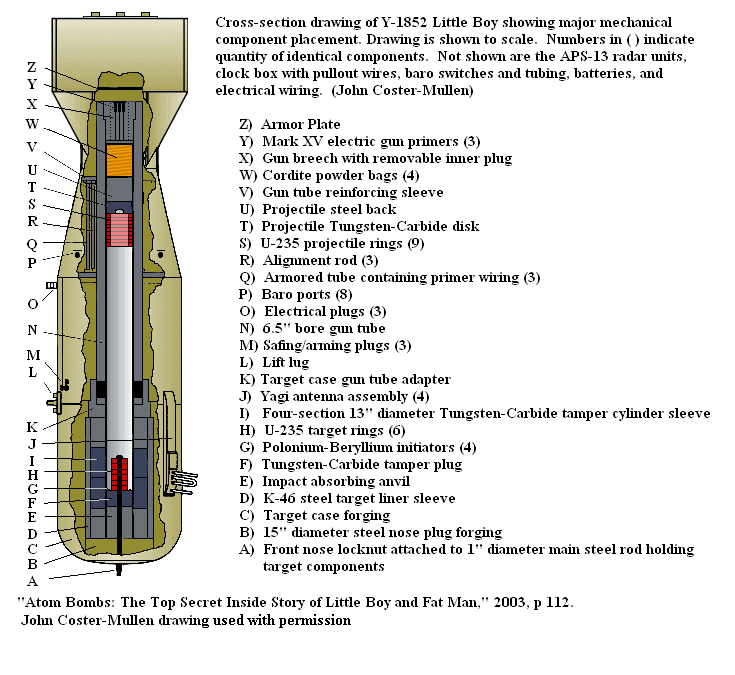In the summer of 1945, the United States Manhattan Project to create an atomic bomb delivered one hundred and ten pounds of uranium enriched to 89% U-235 too the Los Alamos testing grounds in New Mexico.
A design had been developed for a uranium bomb. The bomb consisted of a tube that was ten feet long and about two feet in diameter. At one end of the tube there were bags of cordite explosive behind a hollow cylinder of stacked uranium rings. At the other end of the cylinder, there was another smaller cylinder of uranium rings stacked on a steel rod. The smaller cylinder would fit snugly inside the hollow cylinder and it had a polonium-beryllium neutron initiator behind it. Both cylinders of uranium were surrounded by tungsten carbide to reflect neutrons.
When the explosive was fired, it would propel the hollow uranium cylinder along the tube to engulf the smaller uranium cylinder at the other end of the tube, creating a critical mass of uranium that could undergo fission. The neutron initiator release a burst of neutron when the bomb was triggered. The neutron burst would cause a runaway chain reaction in the uranium and an explosion would result. The actual explosive power of the bomb was highly dependent on the way that the critical mass was configured. If only one percent of the uranium in t he bomb fissioned, it would create an explosion equal to thousands of tons of TNT. On the other hand, if the configuration was off or the impact of the two pieces of uranium too slow, the bomb would just explode with the power of a few tons of TNT.
The components of the bomb were assembled in the winter of 1945 before the uranium was available. It was decided that the design was so reliable that it was not necessary to actual blow up such a bomb to test it. There was a lot of work in the laboratory however to verify that the design concepts were correct. When the uranium arrived in the summer of 1945, the bomb was assembled and ready for use. It was named “Little Boy”. The name was in contrast to a “Thin Man” alternative design which would have been seventeen feet long. The “Thin Man” name came from the detective novels of Dashiell Hammett. It turned out that it was not necessary to make such a long bomb.
The Little Boy gun design was only used once as a weapon. It was a very reliable design from the point of view of detonation but was not very safe. If the plane crashed, the two uranium charges could be driven together and explode. An electrical short circuit could trigger it. If a plane crashed in water, it could be triggered by water getting into the detonator. And, in water, the uranium charges would be subjected to a moderator effect leading to fission. Later nuclear bombs incorporated more safety features.
